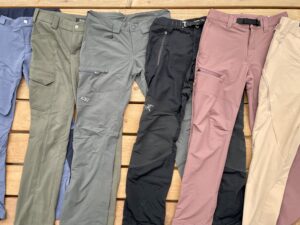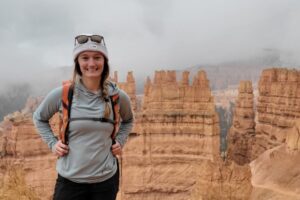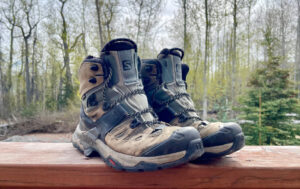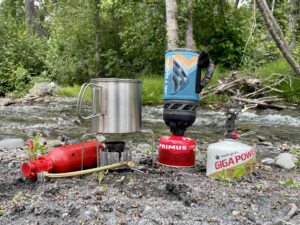Choosing the best snowboard depends on many factors. Someone who primarily rides in the terrain park will not enjoy the same board as someone who mostly rides in the backcountry.
Your preferred riding style, where you ride, your height, weight, and ability level all influence which is the best snowboard for you. From beginners to intermediate to advanced riders, this list of the best snowboards covers it all. Whether you’re looking for a versatile board that can do it all or something specific, we’ve got options.
The best snowboards
Best beginner snowboard: Arbor Foundation Snowboard
- Reverse Camber profile

- Directional twin shape
- Recycled and waste products used
Pros
- Great for learning
- Easy to initiate turns
- Good for a variety of conditions
Cons
- Reports of some durability issues
If you’re getting started with snowboarding, this is a great option. It’s lightweight and the rocker platform provides a forgiving and easy-to-control riding experience. The reverse camber profile makes it harder to catch an edge, which is great for beginners. It also helps with floating in deep snow and is better for riding switch (which can also help if you don’t know which direction you ride yet!).
It is made from a 1:2 poplar-to-paulownia wood blend which provides good energy return while maintaining a lightweight and durable design. The recycled steel edges are detuned at the tip and tail contact points for a catch-free ride.
Plus, instead of petroleum, Arbor uses co-products or waste products to create their Bio-Resin, which reduces their carbon footprint by up to 40%. If supporting environmentally friendly companies is a priority, Arbor is a great company to support. They also offer a three-year warranty.
See Arbor Foundation Snowboard on REI
See Arbor Foundation Snowboard on Moosejaw
See Arbor Foundation Snowboard on Backcountry
See Arbor Foundation Snowboard on EVO
Best women’s specific beginner snowboard: Burton Hideaway Snowboard
- Directional Twin shape

- Flat profile
- Women’s specific snowboard
- Dual wood core
- Fiberglass flex
Pros
- Good for learning off-piste terrain
- Stable
- Good edge hold
Cons
- Chatter at high speeds
This women’s specific snowboard is a playful entry-level option. This model features a tapered shape that helps initiate turns, provides stability at high speeds, and floats in soft snow. All things that are helpful for beginner and intermediate riders.
The directional twin shape has a slightly longer nose than tail, which provides float in powder and allows for more control in variable terrain, yet still works if you want to ride switch. The sintered base keeps the board fast without needing to be waxed too regularly. These features make this a great board for someone wanting to get better on off-piste terrain and powder.
The flat profile makes stability and balance easier, while also providing edge control. The Burton Super Fly 800G core is a dual-species wood core that uses both hard and soft woods to keep weight down without sacrificing performance. And the Dualzone™ EGD™ (Engineered Grain Direction) puts wood along the toe and heel edges, perpendicular to the core, to help with edge hold. The Biax fiberglass provides a soft flex with a forgiving feel. Burton also offers a three-year warranty.
See Burton Hideaway Snowboard on REI
See Burton Hideaway Snowboard on EVO
Best all-mountain snowboard: Jones Mountain Twin Snowboard
- Rocker/camber profile

- Made with recycled materials
- Directional twin shape
- Sintered 8000 base
Pros
- Great all-around board
- Stable
- Good option for a one-board quiver
Cons
- Less user-friendly pop
- Average performance in deeper snow
The Jones Mountain Twin is a great all-mountain snowboard for intermediate and advanced riders. It’s great for anyone who loves to jump, spin, and turn. The camber profile adds snap and edge hold while carving, and the rocker in the tips helps initiate turns, with skidded turns, and with controlling speed. The medium stiff flex adds security at speed.
The Jones Mountain Twin is a very versatile snowboard, which makes it fun for a variety of skill levels. It’s got lots of pop for jumps and playful riding, although it is challenging to pop unexpectedly, similar to other camber boards.
See Jones Mountain Twin Snowboard on REI
See Jones Mountain Twin Snowboard on EVO
See Jones Mountain Twin Snowboard on Backcountry
See Jones Mountain Twin Snowboard on Moosejaw
Best snowboard for kids: SportsStuff Snow Ryder Hardwood Snowboard
- Hardwood design

- Laminated base
- Hook and loop bindings
Pros
- Try out snowboarding without committing to a real board
- Durable
- Use with any boots
Cons
- Can’t be used at a resort
- No edges
Want to get your kids into the sport from a young age? Get them this SportsStuff Snow Ryder. Take them out in the backyard, strap in, and learn to balance while going downhill. This wooden snowboard comes in various sizes to fit children from 35-150lbs. However, this is not a snowboard that can be ridden at the resort because it does not have edges.
The raised nose and tail allow your mini-shredder to learn which foot they prefer forward. The hardwood construction means that this board can go through multiple siblings without falling apart. And the hook and loop bindings can be attached to regular footwear, not snowboard boots. The smooth, laminated bottom provides slip so they can get comfortable going downhill before investing in a real snowboard.
See SportsStuff Snow Ryder Hardwood Snowboard on Amazon
Best all-mountain freeride snowboard: K2 Passport Snowboard
- Rocker/camber/rocker

- Stiff flex
- Designed for all-mountain and freeride
- Wood core
Pros
- Great in all conditions
- Poppy and good for jumps
- Can go fast
Cons
- Doesn’t excel at one thing
If you’re looking for an intermediate to expert-level snowboard that can do pretty much everything well, the K2 Passport is a great option. It rides just about every condition well, from hardpack carving to the deep stuff. The A1 core is made up of multiple wood types, making this all-mountain snowboard light, poppy, and durable. The Rocker/camber/rocker profile combines the float and stability of rocker with the pop and precision of camber.
This board has a bit more flex than your standard all-mountain snowboard, with a bit more play in the nose and tail due to the rocker. The Passport has great edge-to-edge quickness, so it excels at carving. The camber helps with jumps and adds plenty of pop. Plus the sintered 4000 base helps absorb wax to give plenty of slip and durability.
See K2 Passport Snowboard on EVO
Best freestyle snowboard: Lib Tech Skate Banana Mens Snowboard
- Medium flex

- Freestyle snowboard
- True twin shape
- Magne Traction Edges
Pros
- Turns the mountain into a terrain park
- Good intermediate option
Cons
- Not super fast
The Lib Tech Skate Banana is a super playful freestyle board, great for beginners to advanced riders who love to make the whole mountain into a terrain park. With a soft to medium flex, this isn’t the board to charge down the groomers with, but it’s perfect for freestyle riders across the resort. It’s perfect for jibbing and buttering, but the continuous rocker profile makes it less stable for landing jumps. Plus, it doesn’t have much camber, except a bit at the nose and tail, so that leaves it lacking in pop. Magne Traction provides tons of edge grip making this a great option for icy days too.
The true twin shape makes the Skate Banana great to ride switch stance, so if you like to be able to land tricks in either direction, it’s a great freestyle board. The rocker profile makes it float well in fresh snow, but it’s not the best at carving or going fast down groomers. There are better all-mountain snowboard options out there, but if you’re looking for a park or an all-mountain freestyle board that does well all around, The Skate Banana is a great option.
See Lib Tech Skate Banana Mens Snowboard on Amazon
See Lib Tech Skate Banana Mens Snowboard on EVO
See Lib Tech Skate Banana Mens Snowboard on REI
Best splitboard: Jones Snowboards Men’s Solution Splitboard
- Lightweight

- Camber/rocker profile
- Tapered shape
- Stiffer flex
Pros
- Versatile
- Designed for big mountain lines
- Great freeride snowboard
- Fun in all terrains
Cons
- Expensive
If you’re ready to get out of the resort and explore the backcountry, you’ll want a splitboard, unless you want to strap your snowboard to your backpack and boot up the slopes (trust me, it sucks). The Jones Solution is a stable, lightweight splitboard. It does just as well in deep powder in the trees as it does in a tight couloir.
This splitboard has a general directional shape with a rocker profile. It’s not specifically a powder board, but it has more float than expected for the directional shape. It excels in firm snow and the Traction Tech edges provide great edge hold. The smooth, blunt tips reduce drag and catch potential, especially on breakable crust. In the backcountry, you never know what sort of conditions you’ll run into, which makes this board a great option.
See Jones Snowboards Men’s Solution Splitboard on REI
Best women’s all-mountain snowboard: Arbor Veda Camber Snowboard
- Advanced/expert board

- Traditional camber profile
- Medium flex
- Wood core
Pros
- Great in all conditions
- Stable at speed
Cons
- Not great in the park
If you’re looking for a great all-around snowboard for someone who prefers a women’s specific snowboard, the Arbor Veda is a good choice. This model features a camber profile with powder fenders on the front and back, which helps the board float in deep snow and adds some playfulness. It’s pretty stable at speed and turns from one edge to the other quickly. This all-mountain snowboard has a decent edge grip for hard conditions but isn’t the best option for pure ice.
Since the Veda is a directional tapered board, it’s not great for riding switch, it really feels like you’re riding backward. It’s definitely not a park board, but it can hold its own when hitting natural features and would be pretty stable on jumps. This board thrives off-piste and in many different conditions, so it’s a great option for a playful everyday freeride board.
See Arbor Veda Camber Snowboard on Backcountry
Why trust us
At ExWeb, we’ve got mountains on the brain. This writer started snowboarding at 13 and has been obsessed with sliding down snow ever since. She’s an expert in what makes a good snowboard and why different features matter for different types of riding.
Who this is for
This is for anyone looking for a new board this season, whether you’re brand new to the snowboard world or you’ve been shredding for years. We’ve got a variety of options for every skill level and riding style.
How we picked
We picked the best snowboards by researching, reading, and watching reviews. We’ve considered the many factors that go into choosing the best snowboard. If you’re looking for a great all-mountain snowboard, you’ll find it. If you’re looking for the perfect snowboard for the rider who is taking their first snowboarding lessons, you’ll find it. If you’re trying to get into the backcountry, we’ve got a great splitboard option.

Features to look for in snowboards
Size
Sizing your board correctly is important. Having too much board can make it hard to learn, or hard to ride the way you want to. If you’re an experienced snowboarder, you definitely don’t want a too-small board, as that can be less stable, and wobbly at high speed. Snowboard sizing is based on height, weight, and experience. If you’re just getting started, go for something on the lower end of the spectrum.
Shape
The shape of your board depends on what you love most. All-mountain snowboards are the most versatile and often have a directional or directional twin shape. True twin-shaped boards are great for tricks and park riding, while tapered directional boards are best for powder. There are a lot of nuances to shape, and there’s a lot of variety out there depending on what you’re looking for.
Binding
Once you pick a board, you’ll need to pick bindings. We could do an entire guide to the best snowboard bindings since they are often bought separately from the boards. However, you can also get your setup as a package, in which case you’ll want to consider bindings before purchasing.
Camber
Camber describes snowboards that arch off of the ground in the middle of the board when not weighted. Camber gives boards a poppiness that is helpful for jumps and tricks. It also adds edge control while carving, and on firm surfaces. It also helps with stability at high speeds.
Rocker
Rocker describes a board that is flat in the middle and curves upwards at the tip and tail. Rocker helps with flotation in deep powder and makes turns easier to initiate. Many snowboards include both camber and rocker in different parts of the board.
Width
Another feature that’s relative to your size and weight. Ideally, the width of your board will have about 0.5 inches of overhang from your boot on either side. If this doesn’t feel right or impairs your ability to continue riding, don’t worry, they make ultrawide boards for that.
Flex
Flex is super important because it impacts stability and ease of turning. There are a few factors when considering how stiff you want your board to be. The first is ability. If you’re a beginner, you’ll want a pretty soft flex. Softer boards are easier to turn and control when you’re learning.
If you’re anything other than a beginner, your style of riding will dictate your flex rating. For park and freestyle snowboarding, a softer flex is better. But if you’re a freerider who loves to fly down steep terrain and explore the backcountry, a stiff board is better. For an all-mountain boarder, a medium flex is going to be the most versatile.
Material
Snowboards have come a long way in their basic designs and the material used has grown more sophisticated. Snowboards can be made from carbon fiber to wood. Wood cores are the most common, but the core can also be made out of foam or aluminum. The edges are made out of metal, and the bases are made out of P-Tex, a type of plastic. Consider weight and durability when choosing the materials.

Types of snowboards
All-terrain boards
All-mountain snowboards are just that: for the entire mountain. These snowboards perform well in a variety of conditions from groomed runs to choppy off-piste, to the park or pipe. They’re not going to excel at any one thing, so there’s always going to be a better tool for each type of riding, but an all-mountain snowboard is perfect if you want a one-board quiver or like a little bit of everything.
Powder boards
Powder boards are designed for riding deep snow. They usually have a wide nose and a narrower tail. Extra flex in the tail helps the board sink below the snow, which helps the nose float above. They often use rocker for extra float. Powder boards are great if you live somewhere where it gets deep often, but they aren’t amazing at much besides floating in the deep stuff, so they’re not ideal if you just want to own one snowboard.
Split boards
Splitboards are used for backcountry boarding. The board and bindings are designed to be split down the middle, providing the ability to skin uphill before strapping it all back together for the downhill. Splitboards come in many of the other types of board styles, although they are often stiffer than a board that you’d use for freestyle snowboarding.
Freestyle boards
Freestyle snowboards typically have a very soft flex and twin tips. If you love to ride in the park or find yourself doing tricks off of every natural feature you see, a freestyle snowboard might be a good option. However, they’re not good for going fast or riding firm snow.
Freeride boards
Freeride snowboards are designed to be off-piste, whether you’re riding the side-country or ungroomed trails. They go fast and carve hard, and are great for big mountain terrain. These boards are typically directional in shape and have a stiffer flex for speed.

Snowboards FAQ
Q: What kind of snowboard is best for beginners?
If you’re just getting started snowboarding, choose a snowboard with a soft flex. This makes it easier to turn and control. Also, choose a snowboard on the shorter side for your height and weight, because that will also make it easier to turn. However, a shorter snowboard is less stable, so once you begin to progress, you may want a slightly longer board.
Q: What brand of snowboard is the best?
There is not really any one snowboard brand that is better than the others. Some brands specialize in different things, while others make a wide variety of different boards. A few well-known, popular snowboard brands include Burton, LibTech, K2, Salomon, Rossignol, Arbor, Capita, Jones, and GNU.
Q: What is the most versatile type of snowboard?
All-mountain boards are typically the most versatile as they are made to function well from powder to groomers to bumps to jumps.






